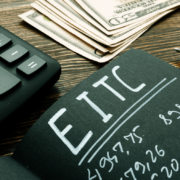Good news! Solar Tax Credit Extended for Two Years
- Discover the amount of the extended solar tax credit.
- Don’t be fooled by deceptive advertising.
- Find out if the credit is refundable.
- Is the credit worth the cost?
- Find out which property qualifies.
- When is the credit available?
- Discover who can get the credit.
- Can you claim the credit for multiple installations?
- Find out how batteries qualify for the credit.
- Do installation costs count toward the credit?
- Learn how the credit affects the basis adjustment.
- Find out how to claim the credit for association or cooperative costs.
- Learn how to prorate the expenses for mixed-use property.
- Find out how to claim the credit on newly constructed homes.
- How do utility subsidies affect the eligible costs of the system?
Congress extended a federal tax credit for the purchase and installation costs of a residential solar system through 2023. The credit for 2021 and 2022 is 26% of the cost of the solar installation. It drops to 22% for 2023, the final year of the credit (unless extended again by Congress). The credit is nonrefundable, meaning it can only reduce your tax liability to zero. However, you may carry the portion of credit not allowed because of this limitation to the next tax year and add it to the credit allowable for that year. The tax code infers that any solar tax credit carryover can be added to the credit allowed in the subsequent year.
However, it is unclear whether any carryover will be allowed in 2024 once the credit expires at the end of 2023. In addition to the credit reducing the regular tax, it also reduces the alternative minimum tax, should you be subject to it. Want to know more? Read on for Fiducial’s explanation of the solar tax credit.

How the solar tax credit works
When you see those TV ads for home solar power, you may get the impression that Uncle Sam is going to pick up 26% of the cost, and you only have to come up with the other 74%. That is not necessarily the whole picture. It is true that the federal government has a 26% tax credit for the cost of a qualified solar installation (some states also have solar credits or other incentives). However, the federal credit is non-refundable and will only offset your current tax liability. Any excess carries over to future years, as long as the credit still applies in future years.
Currently, you may claim the solar tax credit through 2023. This means that you may not get all the credit in the first year, as you might have been led to believe or assumed based upon the TV ads or a salesperson’s pitch.
For example, suppose in 2021, your solar installation costs $25,000. That would qualify you for a solar tax credit of $6,500. But suppose the income tax on your tax return is only $4,000. Then, the credit would reduce your tax liability to zero, and the other $2,500 ($6,500–$4,000) of the credit is carried over to 2022’s tax return, where the credit will be limited to that year’s tax amount. If you again owe less than the amount of the credit, the excess credit carries to the following year. This continues until the you use the credit up or it expires.
Does this credit make sense for you?
Compare the cost of the system (and the interest you will be paying, if financing) to conventional electricity costs. How many years will it take to recover your cost? Do you plan to live in your home beyond that time? Is a solar system really worth the cost? Electricity costs can vary significantly according to locale.
Even if not financially beneficial, there are situations in which the cost may not be the deciding factor. Some areas experience frequent power outages; you may simply want to go green or go off the grid where electric service is not reliable.
If you plan to go ahead with a solar installation, consider the following issues.
Qualifying Property
Only the following solar power systems are eligible for the solar tax credit:
- Qualified solar electric property – property that uses solar energy to generate electricity for use in a main or second residence.
- Qualifying solar water heating property – qualifies if used in a dwelling located in the U.S. and used as a main or second residence. Additionally, at least half of the energy used to heat the water must be derived from the sun. Heating water for swimming pools or hot tubs does not qualify for the credit. The solar equipment must be certified for performance by the Solar Rating Certification Corporation or a comparable entity endorsed by the state government where the property is installed.
When is the Credit Available?
You may claim the solar tax credit on the tax return of the year during which you complete the installation. For example, if you purchase and pay for a system completed in 2022, the credit will be 26% of the cost. But if the project isn’t completed until 2023, the credit will only be 22%. This becomes an even a bigger issue for systems installed during 2023 that aren’t completed before 2024, when the credit rate will be zero. If you plan to purchase a solar system in 2023, the purchase should be made early enough in the year to ensure the installation is completed before 2024.
Who Gets the Credit?
It may come as a surprise, but you need not own the residence where the solar property is installed to qualify for the solar tax credit. You need only be a “resident” of the home. The tax code does not specify that an individual has to own the home, only that it is their residence. For example: A son lives with his mother, who owns the home. The son pays to have the solar system installed; the son is the one who qualifies for the credit.
Multiple Installations
The credit is available for multiple installations. For instance, after the initial installation, if you add additional panels to increase capacity, these would be treated as original installations. They would qualify for credit at the credit rate applicable for the year you competed the additional installation. However, you must complete the installation before 2024. On the other hand, if you had to replace damaged panels or perform other maintenance on the system, we would not consider these items as an original system and their costs would not qualify for the credit.
Battery
A battery qualifies for the credit if it’s charged only by solar energy and not off the grid. Storage batteries have become popular in areas where there are frequent power outages. However, this may be more of a convenience than a necessity, so consider the cost carefully. A software-management tool—whether part of the original installation or added later (before 2024)—also qualifies for the credit in cases in which the software is necessary to monitor the charging and discharging of solar energy from a battery attached to solar panels.
Installation Costs
Amounts paid for labor costs allocable to onsite preparation, assembly, or original installation of property eligible for the credit—or for piping or wiring connecting the property to the residence—are expenditures that qualify for the credit. This includes expenditures relating to a solar system installed on a roof or ground-mounted installations.
Basis Adjustment
With respect to a home, the term “basis“ generally refers to the cost of the home plus improvements and is the amount subtracted from the sales price to determine the gain or loss when the home is sold. The cost of a solar system adds to a home’s basis, but because the solar credit is a tax benefit, the credit reduces the basis. This will generally create a different basis for federal and state purposes where a state does not provide a solar credit, or it differs from the federal solar credit amount.
Association or Cooperative Costs
Are you a member of a condominium association for a condominium you own or a tenant-stockholder in a cooperative housing corporation? Then, you are treated as having paid your proportionate share of any qualifying solar system costs incurred by the condo, cooperative association, or corporation.
Mixed-Use Property
In cases in which you use a portion of your residence for deductible business or rent part of your home to others, you must prorate the expenses. You may only use your personal portion of the qualified solar costs to compute the credit. There is an exception if less than 80% of the property is used for nonbusiness purposes. In this case, the full amount of the expenditure is eligible for the credit.
Newly Constructed Homes
Are you planning on purchasing a newly constructed home that includes a solar system? Then, you may be entitled to claim the solar credit. However, to do so, the costs of the solar system must be separate from the home construction costs. Certification documents must also be available.
Utility Subsidy
Some public utilities provide a nontaxable subsidy (rebate) for the purchase or installation of energy-conservation property. In that case, the cost of the solar system eligible for the credit must be reduced by the amount of the nontaxable subsidy that was received.
As you can see, there is a lot to consider before making the final decision to install a solar system. Is it worth it, and is it the right financial move for you? Call Fiducial at 1-866-FIDUCIAL or make an appointment at one of our office locations for a consultation before signing any contract to make sure a solar system is appropriate for you.
Ready to book an appointment now? Click here. Know someone who might need our services? We love referrals!
For more small business COVID-19 resources, visit Fiducial’s Coronavirus Update Center to find information on SBA loans, tax updates, the Paycheck Protection Program, paid sick and family leave, and more.









